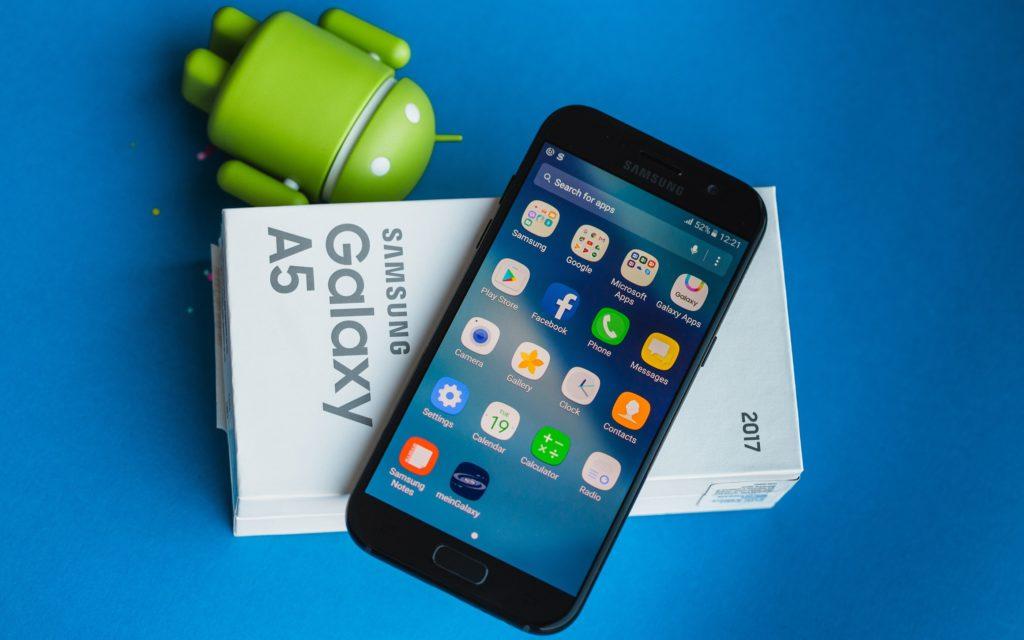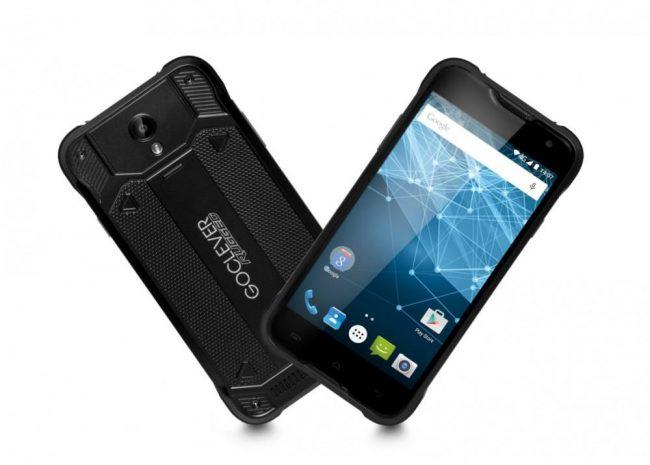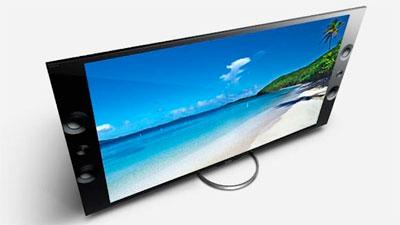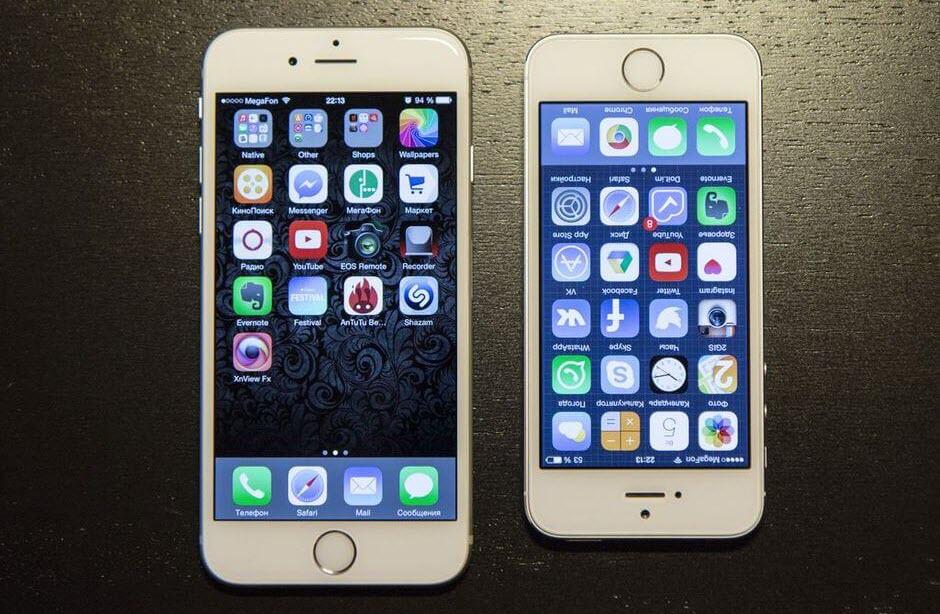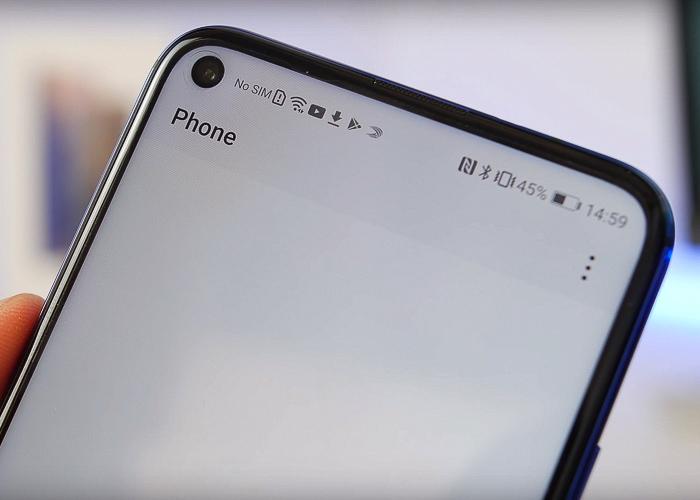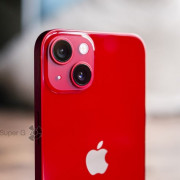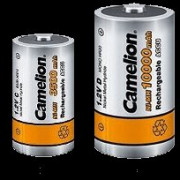Топ-10 смартфонов с хорошей камерой
Содержание:
- Conclusion
- Huawei P9
- Лучшая камера в смартфоне Pixel 2 и Pixel 2 XL
- Apple iPhone 8 Plus
- Apple iPhone 7 Plus
- 3 место ASUS ZenFone 3 Deluxe ZS570KL ракета с 23 мегапикселями на борту
- Video scores explained
- Video scores explained
- Как отличить смартфон с хорошей камерой
- Телефоны с хорошей камерой до 20000 рублей
- Conclusion Apples flagship smartphone delivers the goods
- Test summary
- Video scores explained
- The DxOMark use case scores and overall score for camera sensors
Conclusion
Xiaomi might not be the first name to think of when looking for a high-end smartphone, but the Mi 8 offers camera performance that is up there with the best. The Mi 8 camera is capable of super-fast and accurate autofocus, along with excellent exposures and detail rendition under a wide range of lighting conditions. It has good dynamic range and a genuinely usable telephoto option with good quality 2x magnification, as well as an effective simulated bokeh mode. The Mi 8 is also a solid performer in video mode — all of which, when put together, make for a highly attractive package and a good value proposition.
99
mobile
Xiaomi Mi 8
105
photo
Xiaomi Mi 8
88
video
Xiaomi Mi 8
Pros
- Accurate exposure and wide dynamic range
- Colors are rich and vivid
- Accurate (neutral) white balance
- Very fast and accurate autofocus
- Low noise, except in the lowest of light levels
- Smooth and attractive bokeh simulation
Pros
- Super-fast and accurate autofocus
- Good focus tracking
- Wide dynamic range
- Vivid and pleasant-looking color
- Generally low levels of noise
Cons
- Visible color fringing
- Some loss of fine details, even in bright light
- Occasional autofocus delay
- Slight white balance inaccuracies
- Occasional depth inaccuracies in bokeh mode
Cons
- Slight exposure and white balance inaccuracies
- Loss of detail in various lighting conditions
- Visible differences in sharpness between frames
- Occasionally inaccurate time stamp
Huawei P9
В верхней части нашего рейтинга расположился смартфон Huawei P9. Эта модель может похвастать наличием двойной основной камеры.
Оба модуля имеют одинаковое разрешение по 12 Мпикс (матрица BSI CMOS Sony IMX286), диафрагмы F2.2, угол обзора 27 мм, размеры пикселя 1.25 µm. Каждый модуль выполняет свои задачи. Например, правый модуль предназначен для съёмки в цвете, а левый – в монохроме. Дело в том, что один модуль использует черно-белый сенсор. Это необходимо для получения максимального количества света. Таким образом, сенсор получает больше информации о динамическом диапазоне и достигается большая чувствительность. Второй модуль фиксирует цвет. Далее данные с двух матриц объединяются. В итоге качество снимков значительно улучшается.
Также две камеры необходимы для более точной фокусировки. При этом здесь есть и лазерный автофокус, и стандартный контрастный. Среди плюсов камеры Huawei P9 — получение кадров с диафрагмой F0.95. В общем случае снимки получаются практически на том же уровне, что Samsung Galaxy S7 edge и Apple iPhone 7 Plus. Что касается фронтальной камеры, то она фотографирует хорошо. Стоит отметить широкий угол. Видео Huawei P9 записывает в разрешении FullHD до 60 кадров в секунду. Качество стандартное, а вот звук очень чистый, с детализацией справа или слева.
Кроме того, Huawei P9 отлично выглядит: алюминиевый корпус и защитное стекло с эффектом 2,5D воспринимаются очень хорошо. С другой – аппарат обладает очень производительным железом, достаточным объёмом оперативной памяти и поддержкой LTE всех российских диапазонов.
Лучшая камера в смартфоне Pixel 2 и Pixel 2 XL
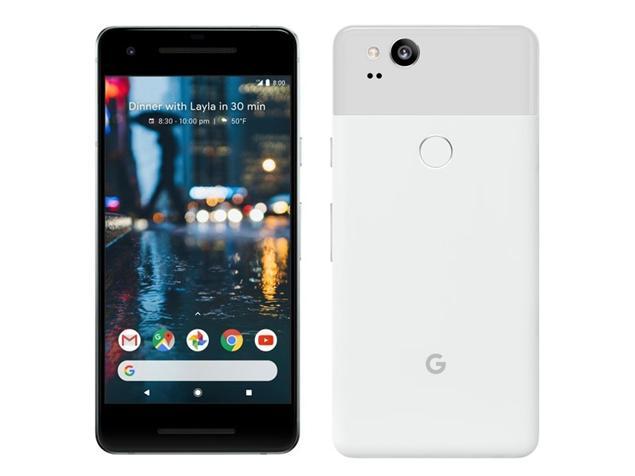
Наверное, лучший Android-смартфон на рынке и уж точно с самой классной камерой. Выбор для тех, кто серьезно занимается фотографией. Google потратил огромные ресурсы на, чтобы сделать камеру в своих смартфонах лучшей, и это хорошо заметно по Pixel 2. Основная молниеносно и точно фокусируется, радуя владельца детализированными и насыщенными деталями фотографиями практически в любых условиях съемки.
Режим HDR+ в камере делает несколько снимков, комбинирует их, удаляет паразитные шумы и на выходе получается фото исключительного качества. Работа режимов «point-and-shoot» (наведи и снимай) не вызывает нареканий, что позволяет даже не самым опытным мобильным фотографам делать яркие и качественные фото.
Основная камера в Pixel 2 и версии XL используется одна и та же, с матрицей 12,2 мегапикселя. Однако, в этом смартфоне первую скрипку играют далеко не просто технические характеристики. Отказавшись следовать тренду использования двойных камер, Google реализовал эффект боке на программном уровне. Реализация вполне достойная – камера (вернее, ее «софт») довольно грамотно выделяет основной объект на фото, делая художественное размытие фона. Объектив достаточно светосильный – f/1.8, есть поддержка фазового и лазерного автофокуса, а также режим HDR и оптическая система стабилизации.
Pixel 2 умеет снимать 4K видео с частотой 30 кадров, а также FullHD с частотой до 120 кадров в секунду. Фронтальная камера получила матрицу в 8 мегапикселей. Отличный аппарат для съемки сэлфи с режимом портрета, реализованном на программного уровне (все то же «боке» для сэлфи-карточек).
Как уже упомянуто выше, автоматические режимы работают на твердую пятерку, однако в приложении камеры есть масса ручных опций для продвинутых мобильных фотографов: настройка экспозиции, баланса белого и так далее. Не стоит забывать и о «Фото Google», сервисе и приложении для облачного хранения фото и видео без ограничений по объему. Т.е. вы получаете безлимитное облачное хранилище для снимков. Впрочем, это приложение можно использовать и на любом другом смартфоне.
По результатам независимых тестов камера Pixel 2 признана лучшей за исключительный динамический диапазон, точную цветопередачу, идеальную проработку деталей и общее высокое качество съемки в самых разных условиях освещения. В целом Pixel за номером 2 – один из лучших смартфонов на рынке, конкурировать с которым могут считанные единицы.
В России купить этот смартфон с лучшей камерой можно в среднем за 50 000 рублей.
Apple iPhone 8 Plus
Стоит — 67 900 рублей
Рейтинг DxOMark — 94
 По сравнению с десятым номером рейтинга камер смартфонов 2018 года по DxOMark «плюсовая» модель потяжелела на 54 грамма, обзавелась 5.5-дюймовым экраном и двойной 12/12 МП камерой с с широкоугольным и телеобъективом. Автофокус камеры работает очень быстро, а съемку можно вести с разрешением 4K и со скоростью 60 кадров в секунду.
По сравнению с десятым номером рейтинга камер смартфонов 2018 года по DxOMark «плюсовая» модель потяжелела на 54 грамма, обзавелась 5.5-дюймовым экраном и двойной 12/12 МП камерой с с широкоугольным и телеобъективом. Автофокус камеры работает очень быстро, а съемку можно вести с разрешением 4K и со скоростью 60 кадров в секунду.
Общая производительность камеры — это эволюция по сравнению с предыдущими iPhone-объективами. Причем резкость в смешанных условиях впечатляет — вы можете разглядеть множество деталей как на более ярких, так и на темных участках фотографии.
В целом, iPhone 8 Plus имеет тенденцию к чрезмерному экспонированию каждой фотографии, при этом изображение становится более ярким, чем объект или сцена в реальной жизни.
Плюсы:
- Большой экран с превосходной цветопередачей.
- Двойная основная камера, которая делает яркие и очень четкие фото при любом условии освещения.
- Есть NFC.
- Очень быстрый процессор A11 Bionic.
- Есть беспроводная и быстрая зарядка.
Минусы:
- Нельзя вставить карту памяти.
- Аккумулятора хватает на день использования со средней нагрузкой.
- Тяжелый и скользкий корпус.
Apple iPhone 7 Plus
В число лучших смартфонов также входит Apple iPhone 7 Plus. Этот девайс необычен по многим параметрам. К примеру, в нём нет привычного всем аудиоразъёма, но есть сенсорная кнопка Home и двойная камера с разрешением 12 Мпикс каждая с широкоугольным и телеобъективом. Первый имеет диафрагму ƒ/1.8, второй — диафрагму ƒ/2.8. Все это обеспечивает двухкратный оптический зум и 10-кратный цифровой зум, так что фотографирует iPhone 7 Plus очень хорошо, хотя и проигрывает тому же Galaxy S7 edge.
Отдельного внимания заслуживает оптическая стабилизация изображения, панорамная съёмка (до 63 мегапикселей), шестилинзовый объектив и контроль экспозиции. Двухкратный оптический зум можно активировать одним лишь нажатием на кнопку. Однако поиграться с фокусом не получится. iPhone 7 Plus этого не умеет, поскольку здесь возможности двойной камеры больше направлены именно на зум. Но зум без потери качества.
Что касается записи видео, в iPhone 7 Plus это 720p 30 кадров/с, 1080 p с частотой 30 или 60 кадров/с, и даже 4K с частотой 30 кадров/с. Есть также поддержка съёмки замедленного видео с разрешением 1080р и частотой 120 кадров/с или с разрешением 720р и частотой 240 кадров/с. В видео предусмотрена кинематографическая стабилизация, шумоподавление и распознавание лиц и фигур.
Фронтальная камера называется FaceTime HD, спокойно делает фотографии с разрешением 7 Мпикс и записывает HD-видео 1080p. Имеет диафрагму ƒ/2.2, сенсор BSI и автоматическую стабилизацию изображения. В итоге селфи получаются максимально высоко качества.
За быстродействие iPhone 7 Plus отвечает процессор Apple A10 Fusion и оперативная память 3 Гб. Встроенная память зависит от конкретной модели – 32, 128 или 256 Гб. К плюсам смартфона также стоит отнести водонепроницаемость и защиту от пыли, поддержку LTE Cat.6, более ёмкий аккумулятор по сравнению с iPhone 6s Plus.
3 место ASUS ZenFone 3 Deluxe ZS570KL ракета с 23 мегапикселями на борту
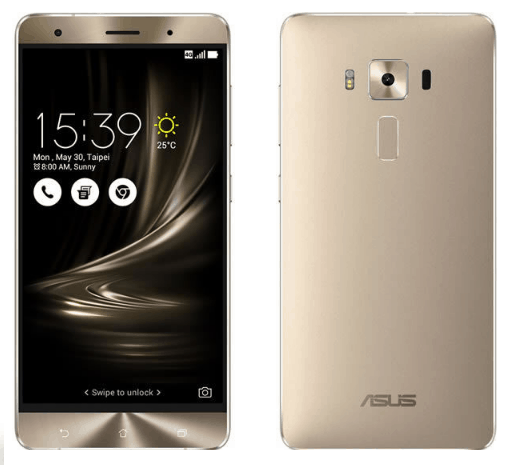
30ASUS ZenFone 3 Deluxe ZS570KL
Помимо великолепной 23-мегапиксельной камеры, этот смартфон может гордиться одной из самых производительных в мире SoC, внушительным объёмом накопителя, большущим, сочным 5,7-дюймовым AMOLED-дисплеем и целыми 6 гигабайтами оперативки! Он действительно очень и очень шустрый, и точно останется таковым как минимум 3 ближайших года.
Основная камера ZenFone 3 Deluxe ZS570KL создана на базе сенсора Sony IMX318 и 6-элементного объектива Largan. Она имеет лазерный автофокус, систему 4-позиционной оптической и 3-позиционной цифровой стабилизации, поддерживает 2 режима HDR (высокий динамический диапазон), режим макросъемки и запись видео с разрешением 3840×2160. Снятые ею фото и видеоролики получаются очень достойного качества, особенно при хорошем дневном освещении.
Технические характеристики ASUS ZenFone 3 Deluxe ZS570KL
- Экран: диагональ 5,7”, разрешение 1920×1080, 386 ppi, 16,78 млн. цветов, матрица AMOLED, Стекло, устойчивое к царапинам Corning Gorilla Glass 4.
- Процессор: Qualcomm Snapdragon 820 MSM8996, 4 ядра, 2150 MHz.
- Видеоадаптер: Adreno 530.
- RAM: 6 Gb.
- ROM: 64-128 Gb.
- Коммуникации: GSM 900/1800/1900, 3G, 4G LTE (bands 1, 2, 3, 4, 5, 7, 8, 12, 17, 18, 19, 20, 26, 28, 29, 30, 38, 39, 40, 41).
- Спутниковая связь: GPS/ГЛОНАСС/BeiDou.
- Поддержка SIM-карт: 2 nano SIM (режим работы – попеременный).
- Интерфейсы: Wi-Fi 802.11ac, Bluetooth 4.2, USB Type-C, NFC, IRDA, разъем для наушников 3,5 мм, опционально – слот для карты памяти, емкостью до 128 Gb (совмещается со слотом второй SIM-карты).
- Датчики: освещенности, приближения, сканер отпечатка пальца, гироскоп, магнитного поля.
- Камеры: 23+8 MPixel, 4-позиционный оптический и 3-позиционный цифровой стабилизатор, светодиодная вспышка, лазерный автофокус, диафрагма F/2, режим макросъемки, HDR. Максимальное разрешение видеосъемки – 3840×2160.
- Аккумулятор: 3000 mAH, несъемный.
- Дополнительные функции: голосовое управление, фонарик, профиль A2DP, USB-хост, Hi-Res Audio в формате 24 бит/192 кГц, быстрая зарядка.
- Материалы корпуса – металл.
- Размеры: 156,4×77,4×7,5 мм.
- Вес: 170 г.
- Операционная система: Android 6.0.
Помимо вышеназванных характеристик, владельцев ASUS ZenFone 3 Deluxe ZS570KL радует эргономичность смартфона – несмотря на большие размеры его удобно держать в руке, а также качественный звук и богатый набор дополнительных функций.
Стоимость этого детища ASUS с 64 Гб ROM в российских магазинах составляет 35 000-55 000 рублей.
Video scores explained
The iPhone X achieves a Video score of 89 points, with almost identical results and scores as for the iPhone 8 Plus. The overall Video score is calculated using the video sub-scores to give us some indication of the device’s pros and cons for shooting moving images: Exposure (81), Color (86), Autofocus (84), Texture (51), Noise (66), Artifacts (83) and Stabilization (91).
The iPhone X’s main strengths lie in exposure, which offers good dynamic range and fast convergence during light changes, as well as in color rendering in videos, which display good saturation and neutral white balance in most lighting conditions. Low light remains challenging with iPhone X videos, however, with noticeable underexposure, visible luminance noise, and slight irregularities in autofocus and tracking affecting sharpness — although considering the conditions, these remain just about acceptable. In good light, though, video autofocus and tracking is both fast and accurate, and the iPhone X’s video stabilization is generally excellent, aside from occasional high-frequency oscillations, which are visible when shooting video with walking movement.
Please note that for video we test all devices at default settings which in the iPhone X’s case is 1080p at 30 frames per second. The iPhone X is capable of recording 4K resolution at 60 frames per second but this mode was not tested for our analysis.
Video scores explained
At 86 points, the Asus ZenFone 5 achieves a slightly lower score for its video performance than for still image quality. The overall Video score is calculated using a range of sub-scores to give us some indication of the device’s pros and cons for shooting moving images: Exposure (79), Color (86), Autofocus (90), Texture (44), Noise (64), Artifacts (83), and Stabilization (76).
In many respects, the ZenFone 5’s video output looks quite similar to its still images, with generally good target exposure, and good color and white balance performance. In addition, the Asus stabilization system works quite well, keeping things pretty steady when holding the camera still and while walking. On the downside, orange casts are visible under lower tungsten lighting, and the autofocus, while generally quite fast and accurate, has a tendency to frequently refocus, which can lead to noticeable differences in sharpness between frames.
Our video samples also often show a cyan-shift effect in the sky (see sample frame grab below), but the ZenFone 5’s main drawback in video mode is a lack of detail. Fine detail and textures are not rendered as nicely across all light levels as on the best-in-class devices, the Google Pixel 2 and the Huawei P20, making the Asus a less preferable option for video shooting.
Как отличить смартфон с хорошей камерой
Технические характеристики камер в телефонах далеко не всегда позволяют сделать однозначный вывод, однако разбираться в них стоит
Наш краткий справочник поможет разобраться в том, что такое мегапиксель, зачем нужно обращать внимание на размер сенсора, есть ли польза от оптической стабилизации, как расшифровывается аббревиатура HDR и так далее.
Мегапиксели
Ключевая характеристика камеры в смартфоне, которой любят хвастаться производители. Если проще, то чем больше мегапикселей, тем больше деталей можно будет разглядеть на фотографии. Само по себе большое количество мегапикселей не означает, что камера в телефоне действительно мощная. Более того, иногда производитель по умолчанию выставляет меньший размер фотографии, чем поддерживает камера. Типичный смартфон 2018 года с хорошей камерой имеет матрицу на 12 и более мегапикселей.
Размер матрицы
Не все мегапиксели созданы одинаковыми – важен и размер матрицы, используемой в камере смартфона
Тайваньский производитель HTC, к примеру, использует термин «ультрапиксель», чтобы привлечь внимание к тому факту, что мегапиксели в его камерах больше, чем у других вендоров. Поэтому даже скромная 4-мегапиксельная камера может снимать более качественно, чем 8-мегапиксельная камера с матрицей меньшего размера
Размеры матрицы измеряются обычно в микрометрах. При прочих равных, чем больше матрица – тем больше света она способна уловить. К примеру, у Galaxy S8 размер пикселей на матрице 1,4 микрометра (1,4 µm).
Диафрагма
Обозначается буквой F или f, после которой идет число. К примеру, F/1.8. Фактически, это максимальный диаметр отверстия в объективе, через которое свет попадает на матрицу камеры в смартфоне
Ключевая характеристика, на которую стоит обращать внимание, если планируется снимать в условиях недостаточно освещенности. Чем меньше значение диафрагмы (минимальное), тем лучше
Так что f/1.7 в Galaxy S8 чуть лучше, чем f/1.8 у iPhone X.
Меняя диафрагму вручную, фотографы изменяют глубину резкости изображаемого пространства (т.н. ГРИП). К примеру, профессионально выглядящие портреты с размытым фоном, получаются при максимально открытой диафрагме (допустим, f/1.8). Если нам важна резкость по всей глубине – то диафрагму «зажимают» (к примеру, до значения f/5.6).
Оптическая система стабилизации изображения
OIS помогает в случаях, когда камеру надо держать максимально твердо. Компенсирует дрожание рук (от счастья обладания одним из смартфонов нашего обзора), помогает получить четкие снимки без «шевеленки» и смазов, когда матрице не хватает света и автоматически алгоритмы вынуждены увеличивать время выдержки. Наряду с минимальной диафрагмой, наличие оптической системы стабилизации помогает делать снимки в условиях плохой освещенности.
HDR (High Dynamic Range, расширенный динамический диапазон)
Функция, которая есть практически в любом современном смартфоне. В этом режиме камера телефона делает несколько снимков с минимальным промежутком времени между ними и разной экспозицией. Затем из нескольких снимков алгоритм HDR «собирает» один. Как правило, снимок HDR получается более ярким, насыщенным и детальным. Обработка HDR требует мощностей, поэтому на недорогих смартфонах будет заметно подтормаживание камеры в этом режиме. Если хотите делать сочные фотки – не забывайте включать HDR в настройках приложения камеры.
Телефоны с хорошей камерой до 20000 рублей
Samsung Galaxy A5 2017
- Экран: SuperAMOLED, 5.2” FullHD;
- Процессор: Exynos 7880 (1.9 ГГц);
- Память: 3/32 Гб;
- Камера: основная – 16 Мп, фронтальная – 16 Мп.
Модель Galaxy A5 2017 года получила ключевое для линейки усовершенствование – влагозащиту IP68. Теперь смартфон может находиться под водой чуть более 30 минут без серьезных последствий для электронной начинки. Конкуренты в той же ценовой категории пока не представили столь же хорошего решения в своих устройствах.
В качестве основного фотомодуля здесь используется 16-мегапиксельный сенсор с диафрагмой f/1.9. Фокусное расстояние – 27 мм. Основная камера Galaxy A5 2017 работает довольно хорошо, хоть ей и не достает оптической стабилизации во время съемки видео.
Вывод: типичный смартфон Samsung в средней ценовой категории. Идеальный выбор на стыке между флагманами и более дешевыми устройствами.
Samsung Galaxy A5
Meizu M6 Note
- Экран: IPS, 5.5” FullHD;
- Процессор: Qualcomm Snapdragon 625 (2.0 ГГц);
- Память: 3/32 Гб;
- Камера: основная – сдвоенный модуль 12+5 Мп, фронтальная – 16 Мп.
Характеристики камеры фаблета от Meizu довольно неплохи: модуль Sony IMX362, диафрагма ƒ/1.9 для основного объектива и ƒ/2.0 для дополнительного. При этом смартфон может записывать достаточно качественные 4K видео, но без оптической стабилизации.

В M6 Note присутствует портретный режим. Правда, автофокус в нем не всегда четко справляется со своей задачей, так что часто точку фокусировки на главном объекте приходится выбирать вручную. Фронтальная 16-мегапиксельная камера порадовала, в помещении отлично просматриваются все детали лица. При необходимости можно активировать встроенный бьютификатор.
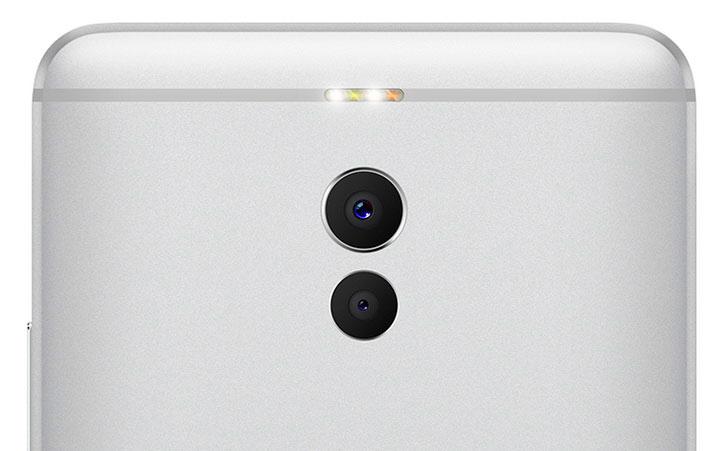
Вывод: смартфон с хорошей камерой до 20000 рублей. Определенно Meizu наконец удалось прервать «черную полосу» неудач с камерами собственных устройств.
Meizu M6 Note
Huawei Nova 2
- Экран: IPS, 5” FullHD;
- Процессор: HiSilicon Kirin 659 (2.36 ГГц);
- Память: 4/64 Гб;
- Камера: основная – сдвоенный модуль 12+8 Мп, фронтальная – 20 Мп.
Разрешение фронтальной камеры как бы намекает, на что делали ставку маркетологи бренда. Да, Nova 2 снимает отличные селфи, к которым очень тяжело придраться. Однако смартфоны с 8-мегапиксельными фронталками могут снимать почти так же.
Основная сдвоенная камера отличилась отменными кадрами даже в сумерках. Субъективно, её вполне можно сравнивать с фотомодулем Huawei P10. В портретном режиме четко выделены контуры объекта на фоне размытого фона.
Вывод: китайские смартфоны с хорошей камерой не перестают радовать своим ценником. Nova 2 вполне может даже потягаться с некоторыми флагманами.
Huawei Nova 2
Conclusion Apples flagship smartphone delivers the goods
With all of the analyses completed, the scores calculated, and the results verified, the iPhone X turns in an excellent result, delivering outstanding images for smartphone photography enthusiasts. It’s exceptional for stills, achieving the best Photo sub-score yet at 101 points. The overall score is affected by a slightly lower result for video, but at 97 points, the iPhone X ties with the Huawei Mate 10 for the second-highest score in our database of overall mobile image quality. For portraits, the improved telephoto lens delivers sharp results even indoors, and the bokeh simulation produces a natural and pleasing background blur. Outdoors, exposures are outstanding, with great dynamic range, impressive skies, good fine detail, and punchy color rendering. Add to all that the extra features on the front-facing camera, including a Portrait mode for blurred-background selfies, and the iPhone X delivers one hell of a smartphone camera.
97
mobile
Apple iPhone X
101
photo
Apple iPhone X
89
video
Apple iPhone X
Pros
- Very good exposure, with good shadow and highlight detail preservation in HDR scenes
- Accurate color rendering and white balance in all lighting conditions
- Good detail preservation and low levels of noise in most lighting conditions
- Good detail preservation using zoom in all lighting conditions
- Bokeh effect looks natural
Pros
- Accurate color rendering and white balance in most lighting conditions
- Good exposure with fast convergence during lighting changes
- Fast and accurate autofocus performance
- Effective stabilization
- Good detail preservation
Cons
- Autofocus is occasionally a little slow
- Underexposed pictures with visible red-eye in flash-only shots
- Ghosting artifacts noticeable on moving objects
Cons
- High-frequency oscillations during walking movements
- Luminance noise visible in low light
- Slight loss of sharpness during tracking in low light
A note about image formats for this review: The iPhones 8, 8 Plus and X record photographs in the DCI-P3 colorspace, which their displays also use. DCI-P3 is newer and larger than the sRGB color space that most devices use and most web browsers assume. So to ensure that the images we used in the review display properly on a wide variety of browsers and devices, we converted the originals from DCI-P3 to sRGB using Photoshop (which is why the published test photos show Photoshop as the creator). This can slightly reduce the richness of color in some cases from what you would see when viewing the original images on a DCI-P3-calibrated display with appropriate software. We also captured the original images using the new HEIF (High-Efficiency Image Format), but then converted them to very high-quality JPEGs for viewing in standard browsers and image editing software. (HEIF is very similar to JPEG, but provides better compression for similar image quality, so the conversion makes the sample image file sizes larger than they were when shot.) Please note, however, that unlike our test images, some of the comparison photos used in this review were shot in JPEG and used as-is for illustrative purposes, and were not used to compute scores.
Test summary
With a Photo score of 101, the Apple iPhone X achieves the best results so far for still images, edging out the Huawei Mate 10 Pro and the Samsung Galaxy Note 8, the previous joint leaders in the Photo ranking, by one point. Compared to its cousin iPhone 8 Plus, the X improves noticeably on Zoom performance, but also does better in terms of Exposure, Color, Texture, Noise and Artifacts. Other key strengths in still image mode include very good exposures and HDR images, accurate color rendering, good detail with low noise, as well as a natural-looking bokeh effect in Portrait mode.
For video, the X doesn’t quite rise to the same high-water mark, achieving a video sub-score of 89 points. With its key strengths good exposure with fast convergence during lighting changes, accurate color rendering as well as fast and accurate autofocus and effective video stabilization, the X’s scores are almost identical to the iPhone 8 Plus’s. Its overall score of 97 puts the iPhone X into joint second place with the Huawei Mate 10 in the current DxOMark Mobile overall rankings, just behind the Google Pixel 2 with 98 points.
Bright light
Shooting outdoors or in bright light conditions, the iPhone X boasts excellent exposures and copes very well with high-contrast scenes, ensuring good detail preservation in both highlights and shadows. Skies were especially impressive in many of our outdoor test scenes, displaying good color and highlight detail at sunset, and striking cloud details that really “popped.” White balance is generally accurate and repeatable outdoors, with good color rendering ensuring well-saturated and pleasant hues. Texture is excellent, too, with good fine detail visible in intricate areas; and although noise is generally well-controlled, a low-frequency chroma noise can be noticeable in areas of plain color.
Low light and Flash
Target exposures in indoor lighting conditions are generally accurate, and while the X didn’t score as well in extreme low light, exposures remain usable. White balance remains accurate indoors, too, with fairly neutral results under both tungsten and fluorescent lighting. Colors remain vivid and pleasant indoors as well, and although color is slightly less saturated in extreme low light, it remains very acceptable.
The iPhone X flash pictures display good detail and low noise, neutral white balance, and only slight fall-off in the corners of the frame. However, flash results for images shot in very low light aren’t quite as impressive, with occasional underexposure, particularly in flash-only pictures. A red-eye effect with portraits is frequently visible as well.
Zoom and Bokeh
The iPhone X’s hardware upgrade on the telephoto camera to a brighter-aperture lens with OIS ensures better zoom shots and sharper portraits (particularly indoors) than those taken with the iPhone 8 Plus. Fine detail preservation is noticeably improved as well; and noise is reduced for cleaner results, although some structured noise remains visible in uniform areas.
Bokeh simulation in Portrait mode produces a natural and pleasant background blur effect, giving a realistic shape to circular spectral highlights that’s similar to optical rendering. Subject masking isn’t perfect, with some artifacts visible around the edges of the portrait, and slight depth estimation failures result in parts of the portrait being slightly blurred, although not as blurred as the background. Overall, though, the bokeh effect is pretty good, with good color and detail rendering.
Video
Shooting 4K video at up to 60 frames per second, the iPhone X is a very capable performer for smartphone video enthusiasts. Capturing movies outdoors or in bright light exposures are very good and handle extremes of brightness very well, with the same good detail preservation in the shadows and highlights as we saw with stills. In very low light, videos are often slightly underexposed, but exposure convergence is both fast and smooth during lighting changes. The level of detail in video is good in both outdoor and indoor movies, but a buildup of luminance noise is evident in low-light conditions. Autofocus is fast and accurate, with good tracking capabilities, and although video stabilization is effective, some vibration with walking movement is evident.
Video scores explained
The Xiaomi Mi 8 achieves a very good Video score of 88 points, with the only weak points being the stabilization that generates a noticeable drift, and noise in low light. We calculate the overall video score using the following video sub-scores: Exposure (81), Color (83), Autofocus (96), Texture (51), Noise (71), Artifacts (70), and Stabilization (83).
The Mi 8’s main video strengths are autofocus, which is fast accurate and offers good tracking capabilities. It has good tracking capabilities that ensure that subjects remain in focus, whether you’re panning or moving relative to your subject. In addition, the Xiaomi corrects for the distracting “focus breathing” that we see on some other devices when the framing is changed during recording. The Mi 8 also produces typically accurate exposures and white balance, though some irregularities were visible. Nevertheless, dynamic range in videos is good, with the Mi 8 capturing good levels of detail in the brightest and darkest regions of high-contrast scenes.
Color is also good in low light, capturing slightly more vivid color compared to premium rivals, though the result is pleasant and not too overpowering. As with stills, the Mi 8 offers a good balance between texture and noise in video clips; however, detail preservation isn’t quite at the level of its best rivals.
The DxOMark use case scores and overall score for camera sensors
We have defined three use case scores on which to base our camera sensor reviews — Portrait, Landscape, and Sports — which all report on different aspects of sensor performance. Each use case score is associated with one of the image quality metrics mentioned above, and defined as follows:
Portrait score: Color Depth
Flash studio photography involves controlled lighting, and even when shooting hand-held, studio photographers rarely move from the lowest ISO setting of their cameras. What matters most when shooting products or portraits is a rich color rendition and color depth. The best image quality metric that correlates with color depth is color sensitivity, which indicates to what degree of subtlety color nuances can be distinguished from one another (and often means a hit or a miss on a pantone palette). Maximum color sensitivity reports in bits the number of colors that the sensor is able to distinguish.
The higher the color sensitivity, the more color nuances can be distinguished. As with dynamic range, color sensitivity is greatest when ISO speed is minimal, and tends to decrease rapidly with rising ISO settings. In DxOMark testing we measure only the maximum color sensitivity. A color sensitivity of 22bits is excellent, and differences below 1 bit are barely noticeable.
Landscape score: Maximum Dynamic Range
Landscape photographers carefully compose their images and choose the time of the day for shooting in the best light. This type of photography commonly involves mounting the camera on a tripod and using the lowest possible ISO setting to minimize noise. Unless there is motion in a scene, relatively long shutter speeds are not an issue with a tripod. On the other hand, dynamic range is paramount. Photographers will often aim for detail in high-contrast settings, juxtaposing a bright sky with shadowy foliage or mountain ranges. Ideally, the dynamic range of the camera should be greater than the dynamic range of the scene, otherwise details in shadows are lost or highlights are burned.
Dynamic range falls rapidly with higher ISO settings, as any analog or digital amplification performed will increase the noise in the darker areas, making it harder to distinguish among fine levels of contrast. Maximum dynamic range is the greatest possible amplitude between light and dark details a given sensor can record, and is expressed in EVs (exposure values) or f-stops, with each increase of 1 EV (or one stop) corresponding to twice the amount of light.
Dynamic range corresponds to the ratio between the highest brightness a camera can capture (saturation) and the lowest brightness it can capture (which is typically when noise becomes more important than the signal — that is, a signal-to-noise ratio below 0 dB). A value of 12 EV is excellent, with differences below 0.5 EV usually not noticeable. Dynamic range is an open scale.
Sports & action score: Low-Light ISO
Unlike the two previous scenarios in which light is either generous (studio) or the camera can be mounted on a tripod (landscape), photojournalists and action photographers often struggle with low available light and fast motion in the scene. When shooting sports or action events, the photographer’s primary objective is to freeze motion, giving priority to short exposure times. To compensate for the lack of exposure, photographers have to increase the ISO setting, which results in a decreased signal-to-noise ratio (SNR). How far can ISO be increased while maintaining decent image quality? The DxOMark low-light ISO metric will give you this information.
The SNR indicates how much noise is present in an image compared to the actual image information (signal). The higher the SNR value, the better the image quality, as detail is not drowned out by noise. The SNR is given in dB, which is a logarithmic scale: an increase of 6 dB corresponds to doubling the SNR, which in turn equates to half the noise for the same signal. A SNR value of 30dB means excellent image quality. We have therefore defined low-light ISO as the highest ISO setting for a camera that allows it to achieve a SNR of 30dB while keeping a good dynamic range of 9 EVs and a color depth of 18bits. A difference in low-light ISO of 25% equals 1/3 EV and is only slightly noticeable. Low-light ISO is an open scale.
